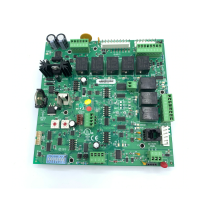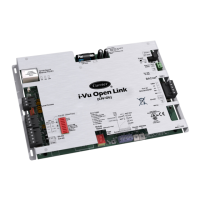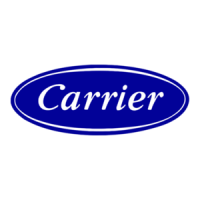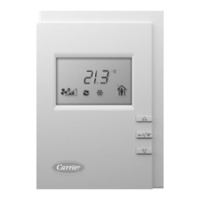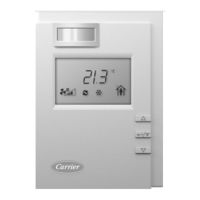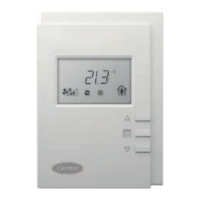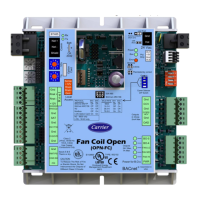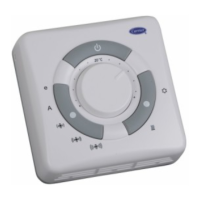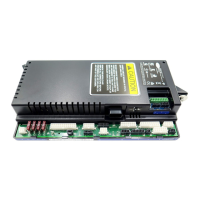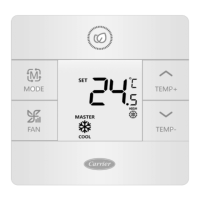Sequence of Operation
RTU Open v3 CARRIER CORPORATION ©2019
Installation and Start-up Guide All rights reserved
44
The RTU Open supports various types of constant volume air source configurations:
• Standard heat/cool unit types with up to 2-stages of mechanical cooling and gas or electric heating
• Heat pump units utilizing a reversing valve output for heating and cooling control
• Heat pump unit (Carrier) with an OEM defrost control board
• Economizer, CO2, Demand Limiting, and RH control strategies are available for appropriately equipped units
• LC WeatherExpert™ unit with 3-stage compressor control and variable speed supply fan control.
The RTU Open may operate as part of a VVT system using Airside Linkage or as a stand-alone controller.
The RTU Open’s operation depends upon its occupancy state (
/
). The RTU Open operates
continuously in the
mode until you configure an occupancy schedule.
An occupancy schedule may be:
• A local schedule configured in the controller using an Equipment Touch or Field Assistant
• A BACnet schedule configured in the i-Vu® application, networked through an i-Vu® Open Router
• A BACnet or local schedule configured for subordinate VVT Zones, networked through an i-Vu® Open
Router(s) and employing Linkage
To set up occupancy schedules, see the documentation for your user interface.
A BACnet schedule, downloaded from the i-Vu® application will overwrite a local schedule that was set up
with an Equipment Touch or Field Assistant.
- the following settings determine occupancy.
Options:
•
– (default) Controller operates continuously, regardless of any configured schedule
•
– Uses a local BACnet occupancy schedule configured within the controller
•
– Occupancy is set over the network by another device or a third party BAS. Refer to the RTU
Open Integration Guide for additional instructions in communication protocols.
•
– Controller monitors an input contact connected to one of the available binary inputs
configured to receive it. You must set
>
to
and one
Input Switch Configuration
to
.

